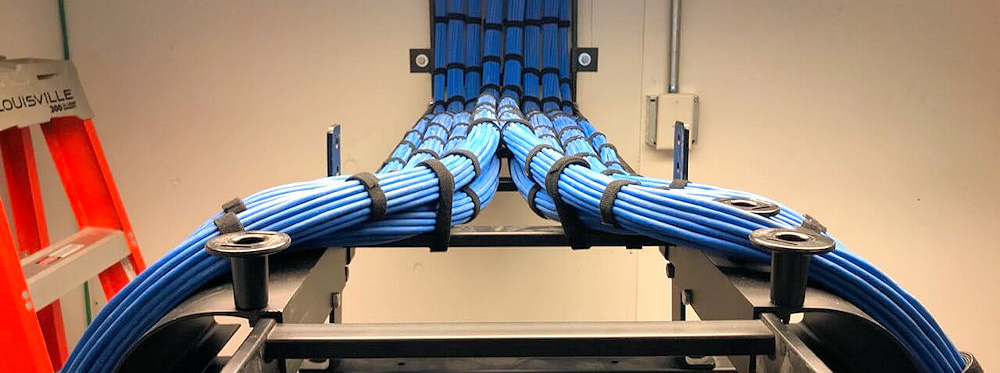Structured Cabling Dallas
What is structured cabling system?
Structured cabling systems have enhanced stability because they use thicker cables that are more durable than regular cables. This stability improves network performance by making it less susceptible to faults and interruptions.

What are the benefits of structured cabling?
Structured cabling refers to the connection of computers, peripherals and telecommunications equipment via compliant cabling systems. These assets can be organized into intelligent networks using different types of cabling. Coaxial cables are used in LANs, while twisted-pair copper wires are used for WANs.
Neighborhoods We Service
We've performed Structured Cabling & Ethernet Cabling to our neighbors in Dallas, Tx since 2006. From TX State Hwy 75 to I635 & I30 / I20, we've serviced clients in neighborhoods like:
Dallas Downtown Historic District - Deep Ellum - Far North Dallas - Uptown - South Dallas - Bishop Arts District - Lake Highlands - West Dallas - Arts District - Preston Hollow
Proudly Servicing The Best Texas Hometown of Dallas
Our Dallas Office
Find Us On The Web!
Call us today to get going with your FREE Ethernet Cabling Analysis & Quote by calling us direct (number listed below) or see us online. Call: (214) 251-5237 Website: https://shelbycommunications.com Shelby Communications - 1505 Denise CT, Keller, TX 76248
What are the components of structured cabling?
Structured cabling can be beneficial for many reasons. Structured cabling has many benefits.


What are the six subsystems of a structured cabling system?
Improved Filtering and Traffic Management: A properly deployed cabling system can help filter and manage traffic in your network more efficiently. This is especially important if your network hosts sensitive data or if it is used by a large number of users.
Does structured cabling is recommended for all Organization Why?
The construction of a structured cabling system is divided into four main components: backbone, front-end, distribution, and terminating. Backbone cables carry the signals between switches and hubs. These cables are usually thick and terminated in plugs called RJ45s or connectors such asfit862. Backbone cables are required for a LAN because they provide a high-speed connection between nodes. Front-end cabling connects the computer to the hub or switch. This type of cable is thin and has either a thin patch cord or an Ethernet connector on one end and a compatible receptacle on the other end. Distribution cabling runs throughout the building carrying information to and from the various devices in the network. This cable is made up of smaller components that are run between individual devices such as workstations, servers, printers, scanners, copiers, and file servers. Distribution cables can also connect to wall jacks for use with headphones.


What is a TIA standard?
Increased Efficiency: A well-maintained and structured cabling system can facilitate faster data transmission across your network. This is due to the fact that cables are plugged together in specific, pre-determined locations, eliminating the need for extra bulk or port extension cords.
What are the six cabling subsystems?
A structured cabling system (SCS) is an organized layout of cables and associated components used to provide communication between devices. The system typically employs a numbering scheme to identify the location of each cable, enables cable route planning tools, and facilitates the installation or maintenance of the SCS. Structured cabling is a technology that enables computers and other devices to be interconnected by coaxial, fiber optic and metal cables. The cables are arranged in a systematic fashion, reducing the chances of interference between devices and improving overall performance. This technology is commonly used in businesses and organizations to connect servers, storage devices, routers and other networking equipment.

What is a TIA standard?
TIA/EIA-568-A-1995 (Commercial Building Telecommunications Wiring Standards) Defines a standard for building cable system for commercial buildings that support data networks, voice, and video. It also defines the technical and performance criteria for cabling.
What is Datacenter structured cabling?
What is Structured Cabling? A structured cabling system uses a Main Distribution Area, or MDA, into which all connections are run. The TIA-942 Standard defines the MDA as the central point of distribution for the data center structured cabling system.
What are the benefits of structured cabling?
Top 11 Benefits of Structured Cabling Systems Easy to Manage. ... Adaptability. ... Less Downtime. ... Cost-Effective. ... Support Application and Equipment. ... Enhanced Flexibility. ... An Investment for the Future. ... Supports Multiple Systems and Applications.
What is structured cabling and give its types?
In telecommunications, structured cabling is building or campus cabling infrastructure that consists of a number of standardized smaller elements (hence structured) called subsystems. Structured cabling components include twisted pair and optical cabling, patch panels and patch cables.
What are the 2 main standards of structured cabling?
The ANSI/ITA-568 and ISO/IEC 11801 are the two names you need to know because these two are the main structured cabling standards.
Which standard is also known as structured cabling?
Which standard is also known as structured cabling? Definition. TIA/EIA Commercial Wiring Standard.